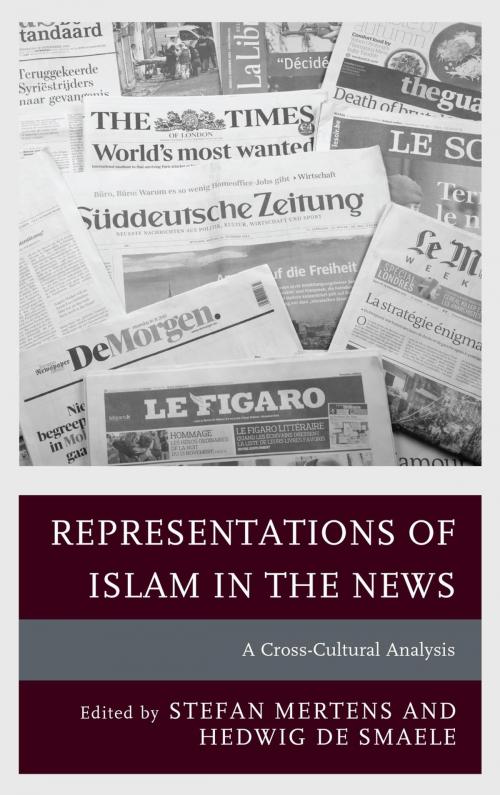Representations of Islam in the News
A Cross-Cultural Analysis
Nonfiction, Social & Cultural Studies, Political Science, Social Science| Author: | David Abadi, Arshad Amanullah, Anna Berbers, Jan Ceuppens, Dorien De Booser, Rozane De Cock, Koenraad Du Pont, Leen d'Haenens, Elke Ichau, Joyce Koeman, Elien Kok, Lut Lams, Stefan Mertens, Stefanie Nijs, Elizabeth Poole, Hedwig de Smaele, Roza Tsagarousianou, Chris Verschooten | ISBN: | 9781498509886 |
| Publisher: | Lexington Books | Publication: | April 15, 2016 |
| Imprint: | Lexington Books | Language: | English |
| Author: | David Abadi, Arshad Amanullah, Anna Berbers, Jan Ceuppens, Dorien De Booser, Rozane De Cock, Koenraad Du Pont, Leen d'Haenens, Elke Ichau, Joyce Koeman, Elien Kok, Lut Lams, Stefan Mertens, Stefanie Nijs, Elizabeth Poole, Hedwig de Smaele, Roza Tsagarousianou, Chris Verschooten |
| ISBN: | 9781498509886 |
| Publisher: | Lexington Books |
| Publication: | April 15, 2016 |
| Imprint: | Lexington Books |
| Language: | English |
The representation of Islam is unquestionably a critical test for comparing journalistic reporting across countries and cultures. The Islamic religion has weight in international reporting (defining what we termed “foreign Islam”), but it is also the religion of numerically important minority groups residing in Europe (“national Islam”). The first part of the book is “setting the scene.” Three chapters provide insights in dominant patterns of the representation of Islam as detected by various authors and studies involved with Islam representation in Europe. Part two, the core section of the book, contributes to the development of the field of comparative journalism studies by comparing several countries and six media systems in Western Europe: the Dutch-speaking part of Belgium (Flanders), the French-speaking part of Belgium (Wallonia), the Netherlands, France, Germany, and the U.K. Part three of this book presents two reception studies, one qualitative and the other quantitative. Equally important, as the bulk of attention goes to Western Europe, is the extension towards the representation of Muslims and Islam outside Western Europe. Part four of the book is devoted to the representation of Islam in some of the so-called BRICs-countries: Russia, China, and India.
The representation of Islam is unquestionably a critical test for comparing journalistic reporting across countries and cultures. The Islamic religion has weight in international reporting (defining what we termed “foreign Islam”), but it is also the religion of numerically important minority groups residing in Europe (“national Islam”). The first part of the book is “setting the scene.” Three chapters provide insights in dominant patterns of the representation of Islam as detected by various authors and studies involved with Islam representation in Europe. Part two, the core section of the book, contributes to the development of the field of comparative journalism studies by comparing several countries and six media systems in Western Europe: the Dutch-speaking part of Belgium (Flanders), the French-speaking part of Belgium (Wallonia), the Netherlands, France, Germany, and the U.K. Part three of this book presents two reception studies, one qualitative and the other quantitative. Equally important, as the bulk of attention goes to Western Europe, is the extension towards the representation of Muslims and Islam outside Western Europe. Part four of the book is devoted to the representation of Islam in some of the so-called BRICs-countries: Russia, China, and India.















